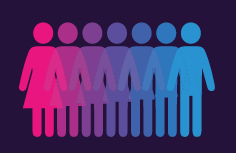•••affluent research
A wealth of opportunity
Engaging the high-income consumer
 According to a GlobalWebIndex article by Sam Ernest-Jones, higher income and readiness to spend make affluent consumers desirable targets for brands across a range of sectors. This group – defined as those who sit within the first quintile of characteristics relating to wealth, educational achievement, working status, vacations, device ownership and car ownership – shows engagement beyond the luxury market with opportunities in areas such as sports, gambling, motoring, business, economy and finance.
According to a GlobalWebIndex article by Sam Ernest-Jones, higher income and readiness to spend make affluent consumers desirable targets for brands across a range of sectors. This group – defined as those who sit within the first quintile of characteristics relating to wealth, educational achievement, working status, vacations, device ownership and car ownership – shows engagement beyond the luxury market with opportunities in areas such as sports, gambling, motoring, business, economy and finance.
Who are these affluent consumers? A survey by GlobalWebIndex shows that this group is both image-conscious and ambitious, being 50% more likely to fall into both the “cosmopolitan” and “status-seeker” segments than the average internet user. They value well-respected brands that will elevate their position among their peers, with 69% saying they tend to buy the premium version of a product. Only 6% of this cohort fall into the “economical” segment, occupied by those who seek value for money above all else from their purchases. This shows that affluent consumers prioritize brand status over the practical value of the product.
Affluent consumers have high ambitions in both their personal lives and careers. Seventy-six percent of this group say they’re motivated to be the best they can be, which aligns with their desire for higher-value products and status-elevating items. Affluent consumers are also highly career-motivated, with 71% citing career progression as a key ambition. This statistic, along with the 64% who state investing money as a goal, highlights the likelihood of this cohort being high earners as well as seeking financial security.
Product quality is the primary factor that motivates the affluent consumer to advocate for a brand at 52%. Rewards such as discounts and free gifts come in second at 41%, despite the fact that value for money is not prioritized by this group. Great customer service is the third-most powerful advocacy driver at 37%, alongside a love for the brand. Just under a quarter say that a brand’s role is to make you feel like a valued customer.
Social media is an important brand touchpoint for internet users but it’s especially crucial for affluent users, 59% of whom are heavy users of social media. In this respect, affluent consumers reflect the global trend in social media usage. They’re using the platforms less to engage with friends and increasingly to watch sports and research products.
Facebook is a popular platform for affluent consumers, with 86% owning accounts. YouTube comes in a close second at 81%. Similarly, visual search content platforms like Pinterest and Instagram both see an overindex when compared with internet users overall. This group is 58% more likely to have entered a competition by sharing a photo or using a hashtag related to a brand on Instagram in the past month.
For affluent consumers, mobile is now the device of choice when it comes to online purchasing with 65% using a mobile device to purchase a product online in the last month. Because this group is more likely to own the latest devices, they’re in a good position to pay for items online using mobile technology, although PC/laptops (47%) and tablets (17%) still play a significant role when it comes to purchasing products online.
Search remains the most powerful means of brand discovery for this group, with 40% claiming this is how they find new brands. Similarly, 49% say search is how they research products and services. More traditional advertising channels are also effective for reaching this group, TV ads and word of mouth being the second-most cited sources of brands discovery at 34%. Thirty-seven percent of affluent consumers use social media to research brands, while 27% discover brands from recommendations and comments via social media.
The survey was conducted by GlobalWebIndex and polled 138,952 online respondents ages 16-64 from 45 different countries.
••• millennials research
A year in Millennial diets
Study explores dietary tastes and trends
According to Good News Network, Millennials have a unique relationship to food, reportedly spending about a month-and-a-half per year on food-related activities such as meal-prepping, cooking and eating out. The survey, commissioned by Sweet Earth Foods, polled 2,000 Millennials on their diets to examine tastes and trends.
 It follows that for a group that spends 1,140 hours a year on average on food, diet is an important consideration – 57% of Millennials currently subscribe to a special diet. For those who follow a special diet, 44% do so because it’s better for the environment, while 37% say it’s more ethical. Food consideration is a priority for Millennials – so what does a year in Millennial food habits look like?
It follows that for a group that spends 1,140 hours a year on average on food, diet is an important consideration – 57% of Millennials currently subscribe to a special diet. For those who follow a special diet, 44% do so because it’s better for the environment, while 37% say it’s more ethical. Food consideration is a priority for Millennials – so what does a year in Millennial food habits look like?
The study found that Millennials spend $2,242 at the grocery store and $1,672 dining out over the course of a year – averaging $187 and $139 per month, respectively – and they also try an average of 46 new foods. Millennials reported making 17 tweaks or changes to their diet per year, with the top changes found to be eating healthier foods (46%), avoiding sugar/carbs (41%) and focusing more on plant-based foods (36%). That’s in addition to one-third (34%) of participants who have cut down on their meat consumption. Of those 1,140 hours that Millennials spend on food-related tasks, they devote 183 hours to purchasing food, 238 hours to prepping and planning meals, 326 hours to cooking, 160 hours to deciding where to eat and 233 hours to actually eating food. On average, they share 47 photos of their food on social media over the course of a year.
A year in food for Millennials also includes 41 dinner parties and eating out 90 times – split evenly between friends and with dates – as well as 52 frozen meals. Not all Millennials are choosing to eat out, however. Some are held back from eating out more often because of a lack of time (37%) or because of a lack of money (37%), while 42% of Millennials report eating healthier when they cook for themselves. Three-quarters (74%) of those on a special diet find it more difficult to eat at restaurants – and 59% of respondents feel like there’s judgment to ordering and buying foods that subscribe to a special diet.
When Millennials prepare meals at home, they find food inspiration from a variety of sources, with their friends (49%), parents (46%) and cookbooks (44%) in the top three – beating out more modern methods of finding recommendations such as social media.
When it comes to what they eat, Millennials’ top priorities are cost (48%), having it be full of nutrients (46%) and no artificial additives in their food (40%). This is followed by organic food (39%) and having it be plant-based (37%). Considering these concerns, it’s no surprise that 57% of Millennials follow a special diet. Respondents pointed to a number of reasons for their diets, although the top reason was that following a special diet was healthier for their body (67%), followed by a desire to lose weight (53%), concerns about health problems and illnesses (48%), concerns for the environment and sustainability (44%) and a desire to be more ethical (37%).
The study was conducted by OnePoll on behalf of Sweet Earth Foods and surveyed 2,000 U.S. Millennials, defined as those who were born between 1981 and 1996.
••• consumer survey
Viva la vino
Survey shows American attitudes toward wine
New research from YouGov has confirmed what many living in the United States already know: Americans like wine. According to the study, most Americans (60%) enjoy at least the occasional glass of wine. About one-third (34%) drink wine at least once a month, though Millennials (46%) and those who live in urban areas (43%) are especially likely to consume wine this often.
 What kind of wine is America drinking? Red wine (69%) is the most popular among wine-drinking adults, though majorities also say they like white wine (65%) or rosé (55%). Among wine drinkers, the most popular kind of reds are merlot (19%), cabernet sauvignon (18%), pinot noir (12%) and zinfandel (12%). As for the white wine list, moscato (23%) tends to be the most popular pick. Chardonnay (17%), riesling (14%), pinot grigio/gris (13%) and sauvignon blanc (11%) are other popular varietals. When it comes to rosé wines, about one in five (19%) say they don’t have a preference. But zinfandel rosé tends to be the most popular, with 33 percent of rosé-drinkers claiming it as their favorite type.
What kind of wine is America drinking? Red wine (69%) is the most popular among wine-drinking adults, though majorities also say they like white wine (65%) or rosé (55%). Among wine drinkers, the most popular kind of reds are merlot (19%), cabernet sauvignon (18%), pinot noir (12%) and zinfandel (12%). As for the white wine list, moscato (23%) tends to be the most popular pick. Chardonnay (17%), riesling (14%), pinot grigio/gris (13%) and sauvignon blanc (11%) are other popular varietals. When it comes to rosé wines, about one in five (19%) say they don’t have a preference. But zinfandel rosé tends to be the most popular, with 33 percent of rosé-drinkers claiming it as their favorite type.
But for most Americans, the varietal isn’t the most important thing when it comes to choosing wine. Two-thirds (66%) of wine-drinking Americans say that when they’re purchasing a bottle, price is one of the most important factors. More than one-third (36%) say that the brand is important, while 24 percent say the alcohol percentage is something they care about. Region, vintage and varietal are slightly less important factors at 20%, 17% and 17%, respectively.
Just over one in five (21%) say that the reviews are one of the top three factors they care about when making a wine purchase, while 16% say the same about the bottle/label design. With cost being one of the most important factors among wine-drinkers, it’s unsurprising that most Americans are looking to spend less than $20 when they buy a bottle of wine. One-quarter (24%) say they typically aim to spend less than $10 when buying a bottle of wine. A plurality (44%) aim to spend between $11 and $20, while just 23 percent of wine drinkers say they typically aim to spend more than $20.
One potential reason Americans may look to less-expensive wines: most don’t believe they personally can tell the difference between expensive and inexpensive wines. Over half (57%) are not very confident (23%) or not at all confident (34%) that they would be able to distinguish between a $5 bottle of wine and a $100+ bottle of wine in a blind taste test.
Millennials (43%) are more likely than members of Gen X (30%) or Baby Boomers (33%) to say they believe they could taste the difference between the two. But a larger number of Millennials (49%) are not confident that they would be able to tell the difference. Men (15%) are more likely than women (9%) to say they are “very confident” they could tell the difference between an inexpensive wine and an expensive wine.
The study was conducted by YouGov and polled 1,179 U.S. adults 21 years and older.
••• gen z research
Challenging the binary
Gen Z leans away from gendered pronouns and products
According to research by the J. Walter Thompson Innovation Group, 56% of Gen Zers know someone who uses gender-neutral pronouns such as “they,” “them” or “ze.” This is a notable increase from Millennials, 43% of whom know someone who uses gender-neutral pronouns.
In keeping with these findings, Gen Z is challenging the gender binary, with over a third of respondents strongly agreeing that gender does not define a person as much as it used to – as compared to 23% of Millennials. Only 44% reported that they always bought clothes designed for their own gender and 77% of Gen Z supports public spaces providing access to gender-neutral bathrooms.
Just 48% of respondents reported that they were completely heterosexual, while 35% rated themselves as somewhere along the spectrum of bisexuality; another 6% responded that they were completely homosexual. The majority (65%) of Millennials reported that they were completely heterosexual, which reflects the 60% of Gen Z who strongly agree people are exploring their sexuality more than in the past. Millennials largely agree with this statement too (53%), perhaps seeing this change reflected in their younger cohort.
 Gen Z doesn’t necessarily shop within the gendered products targeted to them, with a minority buying such clothing (44%), deodorant, (42%), fragrance (39%), shoes (39%), accessories (37%) and sports equipment (19%).
Gen Z doesn’t necessarily shop within the gendered products targeted to them, with a minority buying such clothing (44%), deodorant, (42%), fragrance (39%), shoes (39%), accessories (37%) and sports equipment (19%).
This cohort also shows a certain self-awareness when it comes to issues of gender and sexuality, with 74% of respondents agreeing that they are more accepting now of people of nontraditional gender identities than they were a year ago. About half or more of Gen Z has seen or heard of the terms transgender (84%), queer (72%), asexual (69%), pansexual (59%) and genderfluid (49%), while fewer have seen or heard of genderqueer (33%), non-binary (28%), cisgender (28%), demisexual (23%), graysexual (18%) and aromantic (18%). Only seven percent had not heard of any of these terms.
Given that so many of Gen Z know someone who uses gender-neutral pronouns, there appears to be a gap between showing support for individuals and having the correct terms to describe their orientation and gender identity. This is reflected in the gap between those of Gen Z who have heard or seen the listed terms and those who are familiar enough with them that they could define them for a parent or someone who has never before heard the words. Sixty-nine percent of respondents could define “transgender,” but this number drops for terms such as asexual (39%), queer (37%), pansexual (35%) and genderfluid (28%).
While Gen Z’s don’t necessarily have a wide familiarity with gender and sexuality terms, the study showed that they have an awareness for the LGBTQ community and current issues that affect them such as gendered bathrooms and pronouns, as well as a comfort with their own sexuality that rivals previous generations. Brands wishing to engage this cohort should consider not only individual gender identities and preferences but also Gen Z’s attitude toward gender-exclusive products and businesses.
••• mothers research
An update on the modern mom
Checking in on motherhood trends
 According to recent research by Pew Research Center, U.S. women are more likely now to become mothers than they were a decade ago – particularly highly educated women.
According to recent research by Pew Research Center, U.S. women are more likely now to become mothers than they were a decade ago – particularly highly educated women.
The share of women at the end of their childbearing years (ages 40 to 44) who had ever given birth was 86% in 2016, up from 80% in 2006. This was similar to the share who were mothers in the early 1990s. Over the past 20 years, highly educated women have experienced particularly dramatic increases in motherhood. In 2014, 80% of women ages 40 to 44 with a Ph.D. or professional degree had given birth, compared with 65% in 1994.
The shares of women who were mothers also rose among those with bachelor’s or master’s degrees during this period, while rates of motherhood remained steady for women with less than a bachelor’s degree, at 88%.
Women are becoming mothers later in life – the median age at which women become mothers in the U.S. is 26, up from 23 in 1994. While this change has been driven in part by declines in births to teens, delays in motherhood have continued among women in their 20s. In 1994, more than half (53%) of women in their early 40s had become mothers by age 24; by 2014, this share had fallen to 39%.
Mothers are spending more time in the labor force than in the past but also more time on child care. In 2016, moms spent around 25 hours a week on paid work, up from nine hours in 1965. At the same time, they spent 14 hours a week on child care, up from 10 hours a week in 1965. Dads, too, are spending more time on child care.
Seven in 10 moms with kids younger than 18 were in the labor force in 2015, up from 47% in 1975. In fact, mothers are the primary breadwinners in four in 10 U.S. families. In 46% of households with a mother and father, both parents are employed full time, up from 31% in 1970.
About one in four mothers are raising their children on their own. While most U.S. mothers are married (68%), nearly one-quarter (24%) are solo moms. All told, about 9 million mothers are living with a child younger than 18 without a spouse or partner. Solo parenthood is far less common among fathers; 7% of dads are raising a child without a spouse or partner in the home. A relatively small but growing share of moms are living with an unmarried partner. In 1997, 4% of mothers were cohabiting, and by 2017 that share had doubled to 8%.
Americans say women face a lot of pressure to be involved mothers. Even in an era where women make up nearly half the U.S. workforce and men are more involved in housework and child care than in the past, the public sees vastly different pressure points for women and men in today’s society. Roughly eight in 10 adults (77%) say women face a lot of pressure to be an involved parent; a significantly smaller share (56%) says the same about men. In contrast, most adults (76%) say men face a lot of pressure to support their family financially, while only 40% say women face this type of pressure.
